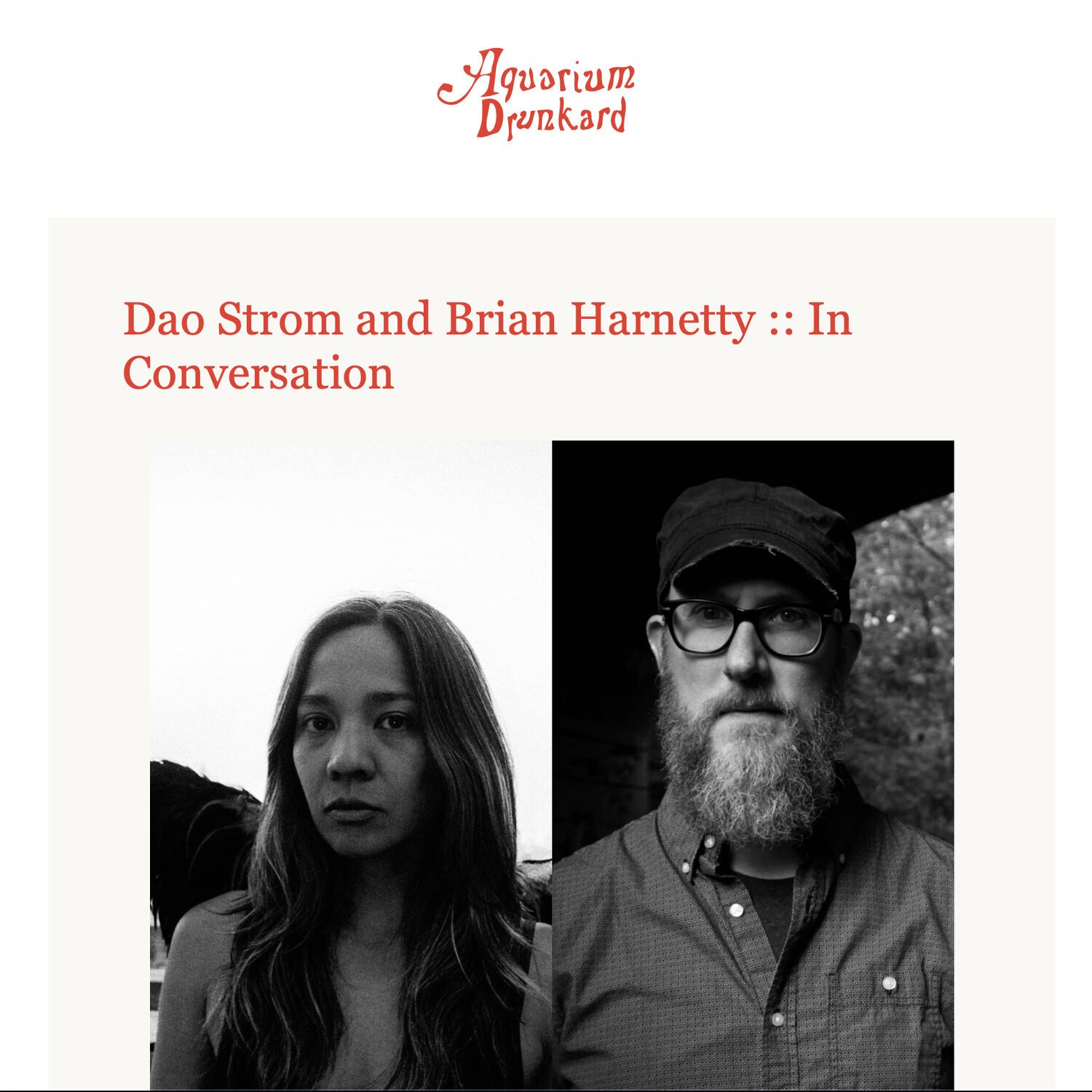AQUARIUM DRUNKARD: CONVERSATION WITH DAO STROM
In support of Dao Strom’s record (TRAVELER’S ODE) and book (INSTRUMENT), Dao and I corresponded over several weeks as part of our ongoing conversation on our work and about how we perceive the world around us. We talked of sound, memory, language, the grain of the voice, and more. You can read the full article here.
Dao Strom: This concept of mistakes being part of the fabric of the work, makes me recall some short films by an artist named Sky Hopinka, where in some shots the camera will jolt or tilt or go black suddenly, and you realize he has made edits that intentionally show the “seams” of the camerawork. This, I think, is similar to the “grain of the voices” (such a great phrase) that you speak of, and the wish to capture those peripheral and spontaneous moments that lend a special texture, that is also unreplicable. Does working with these types of materials become, thus, a sort of working with, composing around, leaving in, of the spaces in-between, I wonder?
Brian Harnetty: Yes! The “grain of the voice” is a phrase by Roland Barthes, and my expanded understanding is that the spaces and silences of a recording also share a kind of audible “grain”––one connected to memory and place, much like photographs––that I want to pay attention to, to highlight, and to ultimately place at the center of the work.
Dao Strom: I love that. I’ve drawn a lot from Barthes in regards to contemplating image, too…In regards to voice: I think maybe, especially with this latest project, I needed to find the “spaces” (or happen on them) that could best enable the voice, both written and sung. By this, I think I am trying to say that the voice—in best expression for a song or poem—may need a certain context or space to sound within; its precise cavity, or body. With the “Traveler’s Ode” song, for instance, I had sung it many, many times before and even tried to record it in a few instances, it’s actually a song I wrote and recorded as an a capella version many years ago; but this incarnation of it, singing through effects pedals, came together as a recording only once I’d found that cooling tower space [in the abandoned/re-purposed Satsop Power Plant]. Once I decided on the slightly hair-brained idea of recording in that space, the pieces fell together quickly, in terms of logistics and collaborators and timing. It was as if that was the place the song wanted to be recorded in. With the poetry, though, as in those self-reflective and transparent passages you mention in Instrument, I would say the ‘space’ of those “voicings” was a very interior space. Some are fragments culled from what I might call my personal journals. I don’t really keep a diary-fashion journal, but I do have several documents on my computer where I write very organically and associatively to myself (or for myself). I think maybe some of the energy of those initial spontaneous voicings provides some of the “grain”, if you will, of voice in those parts.

